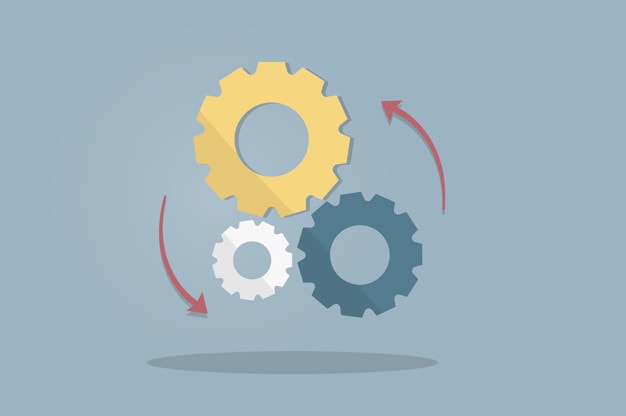
What Are the Types of Analytic Hierarchy Process (AHP) and Their Differences?

Analytic Hierarchy Process (AHP) is a decision-making tool that combines math and psychology to analyze and organize complex decisions Its benefits include a proven formula, versatility in use, ease of use, numerous criteria options, the ability to choose the importance of criteria, and consistency checks AHP has additional applications beyond decision-making
Using math and psychology to effectively analyze, organize, manage, and optimize complex decision-making processes is known as the Analytic Hierarchy Process (AHP). This method operates through three distinct stages -
The ultimate problem or objective you have to solve
All the different possible and best-suited solutions known as alternatives
With the implementation of the Analytic Hierarchy Process, you can effectively evaluate various alternatives based on specific criteria. This approach allows for a logical and quantifiable assessment of all factors involved, resulting in informed decisions that align with the ultimate objective.
In this article, we will take a comprehensive look at the Analytic Hierarchy Process and provide valuable insights on how it can simplify your decision-making process. Join us as we uncover the intricacies of AHP and its applications.
Introduction to the Analytic Hierarchy Process
Making sound decisions is crucial when it comes to securing a bright future. Your choices today can impact not only your own future, but also that of future generations. However, decision-making in the context of business or work can be particularly challenging, with a multitude of factors to consider. Indeed, making informed and wise decisions is no easy feat in the modern world.
When faced with the challenge of processing multiple opinions and arriving at a decision, it can be a daunting task to select the most appropriate option. Whether it's selecting a course of action that will benefit you or choosing the optimal path for accomplishing your project objectives, the pressure can be overwhelming. Nevertheless, there are various techniques available to simplify this process and ease the burden.
A widely recognized approach for simplifying intricate decisions is the Analytic Hierarchy Process (AHP). With its ability to structure problems, conduct evaluations, and aid in decision-making, AHP proves to be a valuable tool in finding suitable solutions to your problems.
What is Analytic Hierarchy Process?
The analytic hierarchy process is a well-known technique used for making complex decision making simple by taking help from mathematics and psychology.
Renowned University of Pittsburgh professor, Thomas L Saaty, was instrumental in developing the Analytic Hierarchy method. This approach aims to create a comprehensive framework for problem-solving, identifying various objectives and options to achieve them.
With AHP, you are presented with multiple options to choose from rather than just one definitive solution. This makes it a highly effective tool for project implementation. The process of AHP involves several steps, including:
1. Problem Structuring
In this, defining decision problem and goal is done. Then, it revolves around finding out and structuring decision criteria and related alternatives.
During the evaluation phase of AHP, the crucial practices involve making judgments on the relative value of the available alternatives based on each decision criterion. Additionally, determining the relative importance of the decision criteria is also a critical aspect of this step.
The process involves consolidating group judgments and analyzing any inconsistencies, ultimately leading to a more effective decision-making process with multiple benefits.
3. Choice
In this step, the calculation is done concerning the weights and priorities of different alternatives and criteria. It also revolves around conducting sensitivity analysis.
Benefits of AHP in making collaborative decisions
Scientists have come up with many methods you can use to make the right decision, but the Analytic Hierarchy Process still stands out of the crowd because of:
1. A proven formula
It is one of the oldest and most trusted decision-making methodologies that many companies have been using to carry out their decisions.
2. Many uses
Organizational decision-making, resource allocation, project selection, risk management, product design, supplier selection, and strategic planning. Different organizations have used the AHP to solve a wide range of decision-making problems, from selecting the best investment opportunity to choosing the most suitable candidate for a job. The flexibility and versatility of the AHP make it a valuable tool for any organization seeking to improve their decision-making process.
Project prioritization and selection
Site selection (“Where you should design your new warehouse/road/airport?”)
Procurement
Technology selection
Evaluating different design options
Strategy development
Stakeholder engagement (for deciding product roadmap, for finalizing the location of an airport or for assisting the government in making policy)
Hiring
Trade studies
3. Easy to use
The ease of use of the software is a crucial factor. It allows for clear explanations of how the software operates, instilling confidence in the decisions it makes. However, when discussing newly introduced methodologies, there may be additional considerations to take into account.
In that case, you will find that most of them have a complex working system making it quite challenging to understand how the results have been generated.
4. Offers many criteria
Analyzing and comparing different subjects often involves considering multiple criteria to generate results. However, many software options do not provide the ability to apply these criteria in different ways. Fortunately, Analytic Hierarchy Process offers a Multi-criteria option, alleviating this concern.
5. Choosing the importance of particular criteria
When working with the multi-criteria feature, you might often face a problem in assigning the priority value to particular criteria.
This has been made easy by the Analytic Hierarchy Process as it:
Asks every individual which criteria for him is more important and by how much
After analyzing individuals' preferences, it's time to assess and compare the results. This will help in determining the values that can be assigned to each criterion. Once the values are confirmed, they are then transformed into algorithms.
Thus the software helps you out in making a collaborative decision on choosing the priority of a criterion.
6.Checks on consistency
Providing inconsistent data to the AHP software can happen from time to time. However, the software is designed to efficiently detect and notify you of any inconsistencies. This highlights the advantages of utilizing the analytic hierarchy process in project management and collaborative environments.
But there are many more features of the analytic hierarchy process than just project prioritization.
Additional Applications of Analytic Hierarchy Process
Since you now have an idea about how analytic hierarchy can help you out with some of the most complex decisions, let us now look at the working of this application
1. Choice
AHP is used for choosing one option from a given set of choices, mainly at the places where there are various decision criteria included.
2. Ranking
The analytic Hierarchy Process involves putting a lot of choices all together from most to least attractive options.
3. Prioritization
AHP is involved in determining the general value of key members from a lot of choices, rather than choosing a single one or just positioning them.
4. Resource designation
AHP does apportioning assets among a lot of given options.
5 Benchmarking
The analytic hierarchy process revolves around comparing the procedures in one’s own company with those of other best-of-breed associations.
6. Quality management
AHP is involved in dealing with the multidimensional parts of value and value improvement
7. Conflict goal
Analytic Hierarchy Process is also useful in settling disputes between parties with clearly contradictory objectives or positions
How Does Analytic Hierarchy Process work?
The working of this application is quite easy to understand. You just need to set up the specific goals of your decision-making process.
These goals get automatically translated to criteria carrying value.
The application shows you pairs of criteria in which you need to choose the more important rule for you.
Additionally, the application enables you to monitor your team's perspectives on the criteria at hand. This enables you to facilitate discussions regarding the varying opinions amongst your team members and come to a consensus on the most important criteria.
There are many methodologies available that give you such features of decision making, but AHP serves as unique software because of its ability to list up paired criteria.
Final Thoughts!
The Analytical Hierarchy Process is an indispensable tool for effective decision-making. It provides a clear roadmap towards achieving your objectives and facilitates collaborative decision-making. However, a notable downside is the numerous pairs of criteria it presents, which can be cumbersome when discussing with high-ranking executives.
AHP continues to be a reliable choice for decision making, even when compared to other software options. Its ability to compare and rank ideas against each other makes it a valuable tool for identifying the best solutions.
Do you think that AHP is effective in organizing, analyzing, and alleviating complex decision-making processes? Share your views with us in the comment section below.
















